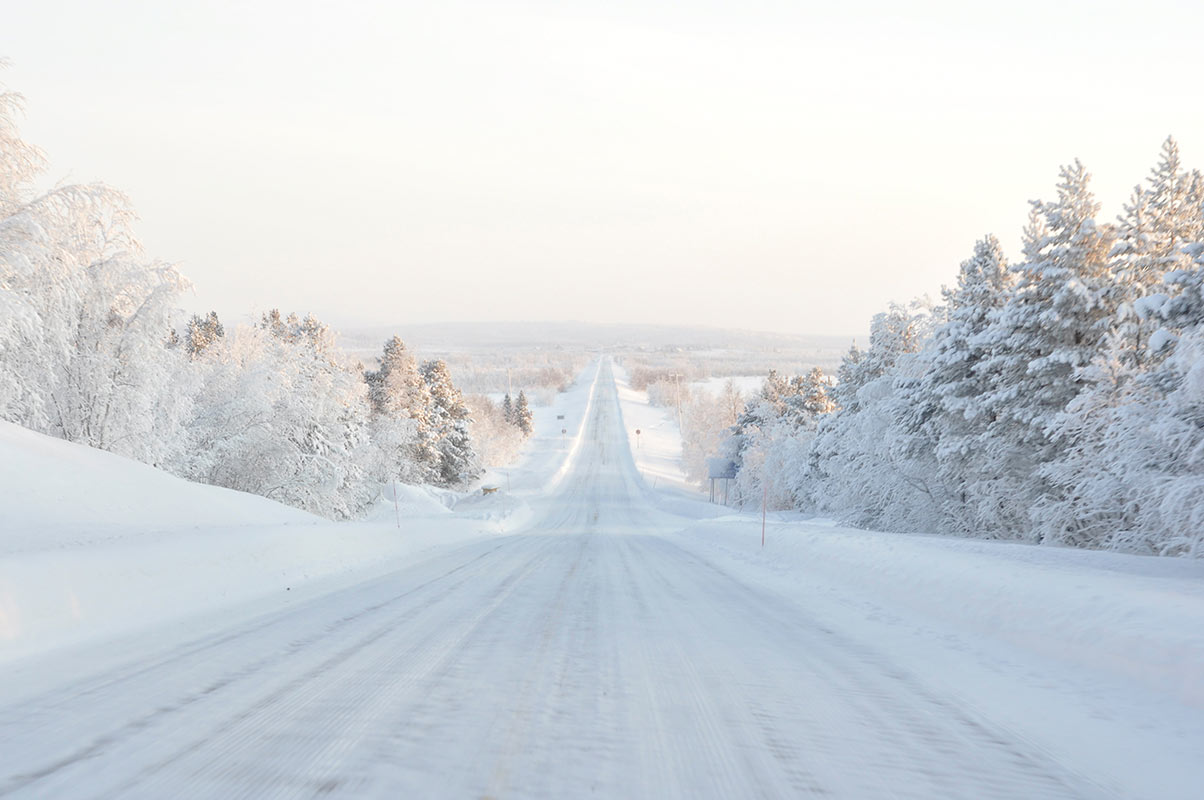Going to Finland? Learn how to say ‘hello’, ‘please’, and ‘thank you’ in Finnish (Suomi) plus other common phrases in Finnish that will impress the locals.
Travelling to Finland and want to learn some key phrases in Finnish? You’re in the right place! You don’t have to learn the entire Finnish language to be travel fluent. Just being able to understand and use common Finnish phrases and expressions will make all the difference when it comes to comprehension. This travel phrase guide will introduce you to the Finnish language with details about its origin, where it’s spoken, and more importantly, how to understand and speak Finnish.
Just like all my other travel phrase cheat-sheets, this travel phrase guide full of useful phrases in Finnish includes practical phrases and vocabulary which will help you better understand its speakers and have more meaningful conversations and interactions. To help me create this guide, I asked my friend and Finnish teacher, Stefano Suigo from Lingua e Passione to provide translations, transliterations, and audio clips to make the learning process easier.
Want to have fun whilst learning Finnish? Struggling to find decent Finnish language resources? I recommend getting uTalk. Available as a desktop site and app, uTalk is awesome for learning key words and phrases in Finnish, especially if you want to use it for travel purposes. It’s great for beginners getting started in a language and invaluable for intermediates looking to fill in gaps in their vocabulary and pronunciation.
What I love most about uTalk is that you can jump around their extensive library of topics and choose what you want to learn, when you want, and at your own pace. Because I believe in uTalk so much, I reached out to them and we’ve teamed up to offer you an exclusive 30% OFF reader discount across all of uTalk’s 140 languages! This offer isn’t available anywhere else! Click here to claim your exclusive 30% discount.
Serious about learning Finnish? Find Stefano on italki and book a lesson. Readers of The Intrepid Guide get $10 FREE italki credits after you book your first lesson here!
Let’s take a closer look at the Finnish language. Here’s what we’ll cover:
Table of Contents
-
- Where is Finnish spoken?
- A Quick History of Finnish
- How many people speak Finnish?
- What is the Finnish language called?
- Finnish Alphabet
- Finnish Pronunciation
- How do the Finnish say ‘please’?
- What is the difference between written and Spoken Finnish? Puhekieli vs Kirjakieli
- Finnish Grammar
- Famous Finnish words
- 99 Finnish Phrases for Travellers with Audio
- 99 Useful Finnish Phrases for Travel [Infographic]
Where is Finnish spoken?
Finnish is the official language of Finland alongside with Swedish, and it’s spoken by around 90% of its population. The main Finnish-speaking minorities outside Finland are located in Sweden (where it has official minority language status), Estonia, Norway and Russia as well as in Brazil, Canada, the United States, and Australia.
As a Balto-Finnic language, Finnish is quite similar to Estonian, even though Estonians seem to have a much easier time learning and understanding Finnish than the other way around. It also shares many similarities with a series of less widespread languages of the same branch such as Karelian (with which it is mutually intelligible), Ingrian, Veps and Ludian, spoken by minorities in Russian territory.
An interesting comparison with Hungarian, a language that shares the same ancient origins, reveals a common basic structure where only the core of the grammar is similar but other dissimilarities, especially in vocabulary, make them mutually completely unintelligible.
A quick history of the Finnish language
Finnish belongs to the Balto-Finnic branch of the Uralic language family (that also includes Estonian, Sami and Hungarian among others) and evolved from Proto-Finnic roughly over the course of three millennia. In Medieval times, Finland was under Swedish rule and Finnish was a merely oral language, that is to say, it was spoken but not written. The earliest Finnish text we know of dates back to the 15th century, whereas a comprehensive written standard of this language, based on Western Finnish dialects, was developed around a century later when clergyman Mikael Agricola first translated the New Testament into Finnish.
Nonetheless, it was only starting from 1863 that the Finnish language could be used when dealing with authorities, and only in 1892 did Finnish acquire official language status alongside Swedish. The “Kalevala”, a work of epic poetry published by Elias Lönnrot in 1835, is considered by many as the most notable contribution to modern Finnish literature and Finland’s growing sense of nationality that later culminated in Finland’s independence from Russian rule in 1917.
The Finnish spoken in Finland today comprises several dialects that can be roughly divided into two main groups: Western and Eastern dialects. The vast majority of Finnish dialects are mutually intelligible, with differences limited to some changes in vowels and diphthongs as well as in rhythm. One of the most notable indicators is the way the word for “I” (minä) changes: while it’s usually abbreviated to mä [ma] in Southern Finland, it becomes mie [mee-eh] in the East and mää [maa] in the Turku area, for instance.
How many people speak Finnish?
According to the Institute for the Languages of Finland, Finnish is spoken by about 5.7 million people worldwide, mainly in Finland where approximately 4.9 million people speak it as a native language and over 0.5 million people as a second language. The largest Finnish-speaking minority is located in Sweden and counts around 300,000 speakers.
What is the Finnish language called in Finnish?
Finnish is called suomi or suomen kieli in Finnish. Written with a capital letter, Suomi also means Finland.
Finnish Alphabet
The Finnish alphabet has 29 letters. The letter G appears in Finnish words only in combination with the letter N in the nasal “ng” sound. Many other letters, namely B, C, F, Q, W, X, Z and Å, are used only in names and recent foreign loanwords. It is interesting to see how, in less recent loanwords instead, such sounds have ended up being replaced by “more Finnish” consonants. For example, a giraffe is kirahvi (g->k, ff->hv), and a buffalo is puhveli (b->p, f->hv).
Two more letters can occur in loanwords but are not part of the alphabet: š [sh] and ž [zh].
Finnish Alphabet with transliteration
| a aah | p peh |
| b beh | q koo |
| c seh | r ar |
| d deh | s aess |
| e eh | t teh |
| f af | u uh |
| g gheh | v veh |
| h hoh | w kahk-soh-ees-vee |
| I ee | x ax |
| j yee | y uu |
| k koh | z tset |
| l al | å roo-oh-tsah-lah-ee-nehn oh |
| m am | ä aa |
| n an | ö euh |
| o oh |
Finnish Pronunciation
Finnish is a strongly phonetic language, that is to say, there is a direct relationship between how words are spelled and how they sound. With only a small number of exceptions, you should be able to pronounce words correctly when you see them written for the first time (unlike English, for instance). Stress is very consistent too, as it falls always on the first syllable of any word.
Finnish relies heavily on vowel sounds, with 8 separate vowels (that can be either short or long) and as many as 18 diphthongs. Finnish vowels can be divided into three groups: front (ä, ö, y), neutral (e, i) and back (a, o, u) vowels. According to the so-called vowel harmony, a phenomenon shared by other languages such as Hungarian and Turkish, single non-compound words can contain only vowels of the same type as the initial syllable. This also affects all endings and suffixes that are attached to the words, for example:
- talo (a house), talo–ssa (in a house), but ämpäri (a bucket), ämpäri-ssä (in a bucket).
Another characteristic is the abundance of double consonants, where the consonant sound is doubled in its length, or “held” in between two different syllables. The best way to learn how to pronounce these is to imagine a hyphen separating the consonants, as in kat-to (roof) and kis-sa (cat), for instance.
Differentiating between single and double consonants as well as vowels can be essential in some cases because the meaning of a word can change based on such sounds only:
- kuka [koo-kah] = who
- kukka [kook-kah] = flower
- tuli [to-lee] = fire
- tuuli [tooo-lee] = wind
How do the Finnish say ‘please’?
Interestingly enough, the Finnish language lacks a word for one of the most common expressions in most other languages: “please”. While there is no real translation, there are some other ways to express politeness in requests, questions, solicitations, etc. Here is a couple:
1. Turning the verb to the conditional mood, marked by “-isi” (the English “would, could”).
- Saisinko leipää?
Can I have some bread, please? [lit. Would I get some bread?]
- Voisitko tarkistaa?
Can you check this, please? [lit. Could you check?]
2. Adding the emphatic suffix “-han/hän” to the verb
- Laitathan hakemuksesi meille sähköpostitse
Please send your application by e-mail [lit. You do send your application by e-mail]
- Teettehän tämän valmiiksi huomiseen mennessä
Please prepare this for tomorrow [lit. You do prepare this for tomorrow]
Puhekieli vs Kirjakieli: What is the difference between written and Spoken Finnish?
The spoken, colloquial version of Finnish (puhekieli – “speech language”) can be said to be significantly different from its standard, written version (kirjakieli – “book language”). Some of the most notable differences include:
Abbreviations: Some word-final vowels or syllables tend to disappear.
- esimerkiksi > esimerkiks (for example)
- mutta > mut (but)
- kyllä > kyl (yes)
Words that merge:
- tuletko sinä? > tuuksä? / tuutsä? (are you coming with us?)
- en minä tiedä > emmä tiiä (I don’t know)
Personal pronoun usage:
In everyday speech, Finns tend to replace the standard 3rd person pronoun “hän” (he/she) with the pronoun “se” (it), as well as “he” (they) with “ne” (indicating things in the plural, rather than people).
- Hän oli täällä > Se oli täällä (he/she was here)
- He ovat suomalaisia > Ne on suomalaisii (they are Finns)
Verb forms
One of the most remarkable changes happens with verb forms in the 1st person plural (the English “we”), where the standard conjugation usually gives way to the passive form in everyday speech.
- me tapasimme eilen > me tavattiin eilen (we met yesterday)
- me emme nähneet heitä > me ei nähty niitä (we didn’t see them)
Numerals
Numerals can become extremely long words in Finnish. In spoken, informal Finnish numbers tend to be shortened quite a lot (hyphens added for clarity):
- seitsemän-kymmentä-kahdeksan > seis-kyt-kaheksan (78)
- neljä-kymmentä-kaksi > nel-kyt-kaks (42)
Finnish Grammar
Finnish Case System
Finnish is an agglutinative language, which means that multiple endings can be attached to nouns, adjectives, pronouns and even numerals to change their forms depending on the function they serve in a sentence; some of these endings correspond to markers for various grammatical cases. Now, you may have heard about cases before, and you may know that Latin had 6 cases, German has 4, most Slavic languages have 6 or 7, but Finnish has as many as 15! Many of these endings substitute for prepositions in English and other languages, e.g.:
- talo (a house) sohva (a couch)
- talossa (in a house) sohvalla (on a couch)
The Finnish case system includes the nominative (marking the subject), the accusative and the partitive (usually marking the object), the genitive (possession, relation), six locative cases (for locations – see examples above – and other functions), as well as five minor cases that are used less frequently.
Another important feature of Finnish grammar is “consonant gradation”, meaning that some consonants or consonant clusters in the word roots change when certain case endings are attached to them. Some of these changes affect vowels as well. Here’s an example:
- lehti (a leaf) – nominative
- lehden (of a leaf) – genitive (-n)
In this example, adding the -n ending of the genitive case causes the “t” to become a “d” and the final “i” to turn into an “e”. All this applies not only to the main noun but also to all its modifiers, so that we have, for instance:
- pieni – punainen – talo (a small red house)
- pienessä punaisessa talossa (in a small red house)
Good news: Finnish is a pretty logical language, so while there are certainly lots and lots of patterns to memorize, they tend to be consistent, and surprises (exceptions) are very few, especially if compared to other languages.
Negation
Negation in Finnish happens through a special “negative verb” that actually conjugates in personal forms just like any other verb, i.e. it changes depending on the subject:
- en tahdo – I do not want
- et tahdo – you do not want
- ei tahdo – he does not want
- emme tahdo – we do not want
- ette tahdo – you do not want
- eivät tahdo – they do not want
In the example above, notice how, because the negative verb already has the personal ending, the main verb (tahdo) doesn’t have any and remains unchanged throughout the conjugation.
Basically, it’s the negation that gets the inflection. As a result, a simple “no” answer to a question can take different forms in Finnish! For example:
- Lähdetkö nyt? – Are you leaving now?
- En. – No. (I)
- Häiritsenkö? – Do I disturb?
- Et. – No. (you)
- Tietääkö hän? – Does he/she know?
- Ei. – No. (he/she)
Gender
Finnish is a genderless language, meaning that all nouns and even all pronouns are gender-neutral: hän, for instance, means both “she” and “he”. Fun fact: you might read an entire book or novel and end up wondering what gender the protagonist was.
There used to be a suffix to make some words feminine (-tar/tär), but such forms are no longer commonly used nowadays, except for a few words such as kuningatar (queen), the feminine form of kuningas (king).
Future tense
Finnish has no future. No worries, I’m not being pessimistic about the continuing existence of this fascinating language in the coming years, but rather I’m referring to its lacking a future tense for its verbs.
In the absence of a future tense, actions occurring in the future are expressed in a number of different ways in Finnish. The most common way is to use the present tense and then simply add some other word or expression indicating when the action will take place: kohta (soon), myöhemmin (later), huomenna (tomorrow), and so on.
Another option is to use other verbs such as aikoa (to intend) or meinata (colloquial for to plan). Interestingly, other ways to express future events involve the usage of different grammatical cases:
- Luen kirjan (accusative case) – I will read a book
- Luen kirjaa (partitive case) – I’m reading a book

Sauna and Sisu: Famous Finnish words
There is at least one Finnish word that has made its way into most languages all over the world and that almost everyone knows: sauna. Saunas were invented in Finland several millennia ago and are still a cornerstone of Finnish culture, as well as of every Finnish home. So much so that, traditionally, when people moved they used to build the sauna first, and only then the house.
Another very Finnish word is sisu. Sisu is a Finnish concept that describes a stoic resilience, determination and hardiness considered to be necessary to face the difficulties of life in general and of life in harsh conditions in particular. This word doesn’t have a literal equivalent in any other language. For more beautiful untranslatable travel words from around the world, visit my collection here.
99 Useful Phrases in Finnish (Suomi)

Want the infographic to take with you? Scroll to the bottom of the page and save it or pin it.
| Finnish Translation | Pronunciation / Transliteration | |
|---|---|---|
Greetings |
||
| Hello (greet someone) | hei / moi |
hey / moy |
| Good morning | Hyvää huomenta |
huu-vaa hoo-oh-mehn-tah |
| Good night | Hyvää yötä |
huu-vaa uu-euh-ta |
| Good evening | Hyvää iltaa |
huu-vaa eel-tah |
| Goodbye | Hei hei / moi moi |
hey hey / moy moy |
| How are you? | Mitä kuuluu? |
mee-ta kooh-looh |
| I’m am very well, thank you | Oikein hyvää, kiitos |
oy-keh-in huu-vaa, kee-tohss |
| Good, thank you | Hyvää, kiitos |
huu-vaa, kee-tohss |
| What is your name? | Mikä sinun nimesi on? |
mee-ka see-noon nee-meh-see ohn |
| My name is… | Minun nimeni on… Requested file could not be found (error code 404). Verify the file URL specified in the shortcode. |
mee-noon nee-meh-nee ohn |
| It’s nice to meet you | Hauska tutustua |
how-skah too-toos-too-ah |
Essentials |
||
| Thank you | Kiitos |
kee-tohss |
| You’re welcome | Ole hyvä / eipä kestä |
oh-lay huu-va / ay-pa kehss-ta |
| OK | Ok / okei |
oh-koh / oh-kay |
| Excuse me | Anteeksi |
ahn-teh-xee |
| I’m sorry | Anteeksi |
ahn-teh-xee |
| I don’t understand | En ymmärrä |
ehn-ummar-ra |
| I only speak a little bit of Finnish | Puhun vain vähän suomea |
poo-hoon vah-een va-han soo-oh-meh-ah |
| Can you please repeat that slowly | Voisitko toistaa hitaasti? |
voh-ee-seet-koh toh-ee-staah hee-taahs-tee? |
Questions |
||
| Where? | Missä? |
mees-sa? |
| How? | Miten? |
mee-tehn? |
| Where is/are…? | Missä on…? |
mees-sa ohn…? |
| How much? | Kuinka paljon? |
koo-een-kah pahl-yohn? |
| Who? | Kuka? |
koo-kah? |
| When? | Milloin? |
meel-loh-een? |
| Why? | Miksi? |
meek-see? |
| What? | Mitä? |
mee-ta? |
| Which? | Mikä? |
mee-ka? |
| How much is this? | Paljonko tämä maksaa? |
pahl-yohn-koh ta-ma mahk-sah? |
| How much does that cost? | Paljonko tuo maksaa? |
pahl-yohn-koh too-oh mahk-sah? |
| Where is the toilet? | Missä on vessa? |
mees-sa ohn vehs-sah? |
| Can I have… | Saisinko… |
sigh-seen-koh… |
| I would like… | Haluaisin… |
hah-loo-i-seen… |
Food and Drink |
||
| The menu, please | Saisinko ruokalistan |
sigh-seen-koh roo-oh-kah-lees-tahn |
| Two beers, please | Kaksi olutta, kiitos |
kahk-see oh-loot-tah, kee-tohss |
| A bottle of house white/red wine, please | Pullo talon valkoviiniä/punaviiniä, kiitos |
pool-loh tah-lohn vahl-koh-vee-nee-ya, kee-tohss |
| Some water, please | Vettä, kiitos |
veht-ta, kee-tohss |
| I’m allergic to… | Olen allerginen… |
oh-lehn ahl-lehr-ghee-nehn |
| I’m a vegetarian | Olen kasvissyöjä |
oh-lehn kahs-vees-suu-euh-ya |
| Can we have the bill, please? | Saisimmeko laskun? |
sigh-seem-meh-koh lahs-koon? |
| What do you recommend? | Mitä te suosittelette? |
mee-ta teh soo-oh-seet-teh-leht-teh? |
| The meal was excellent | Ruoka oli erinomaista |
roo-oh-kah oh-lee eh-ree-noh-mah-ees-tah |
Getting Around |
||
| Left | Vasen |
vah-sehn |
| Right | Oikea |
oy-keh-ah |
| Straight ahead | Suoraan eteenpäin |
soo-oh-rahn eh-tehn-pain |
| Turn left | Käänny vasemmalle |
kaan-nu vah-sehm-mahl-leh |
| Turn right | Käänny oikealle |
kaan-nu oy-keh-ahl-leh |
| Bus stop | Bussipysäkki |
boos-see-pu-sak-kee |
| Train station | Juna-asema |
yuh-nah-ah-seh-mah |
| Airport | Lentokenttä |
lehn-toh-kehnt-ta |
| Entrance | Sisäänkäynti |
see-san-ka-uun-tee |
| Exit | Uloskäynti |
uh-lohs-ka-uun-tee |
Numbers |
||
| 0 | Nolla |
nohl-lah |
| 1 | Yksi |
uuk-see |
| 2 | Kaksi |
kahk-see |
| 3 | Kolme |
kohl-meh |
| 4 | Neljä |
nehl-ya |
| 5 | Viisi |
vee-see |
| 6 | Kuusi |
koo-see |
| 7 | Seitsemän |
seyt-seh-man |
| 8 | Kahdeksan |
kahh-dehk-sahn |
| 9 | Yhdeksän |
uuhh-dehk-san |
| 10 | Kymmenen |
kuum-meh-nehn |
| 11 | Kymmenen |
uuk-see-toy-stah |
| 12 | Kaksitoista |
kahk-see-toy-stah |
| 13 | Kolmetoista |
kohl-meh-toy-stah |
| 14 | Neljätoista |
nehl-ya-toy-stah |
| 15 | Viisitoista |
vee-see-toy-stah |
| 16 | Kuusitoista |
koo-see-toy-stah |
| 17 | Seitsemäntoista |
seyt-seh-man-toy-stah |
| 18 | Kahdeksantoista |
kahh-dehk-sahn-toy-stah |
| 19 | Yhdeksäntoista |
uuhh-dehk-san-toy-stah |
| 20 | Kaksikymmentä |
kahk-see-kuum-mehn-ta |
| 30 | Kolmekymmentä |
kohl-meh-kuum-mehn-ta |
| 40 | Neljäkymmentä |
nehl-ya-kuum-mehn-ta |
| 50 | Viisikymmentä |
vee-see-kuum-mehn-ta |
| 60 | Kuusikymmentä |
koo-see-kuum-mehn-ta |
| 70 | Seitsemänkymmentä |
seyt-seh-man-kuum-mehn-ta |
| 80 | Kahdeksankymmentä |
kahh-dehk-sahn-kuum-mehn-ta |
| 90 | Yhdeksänkymmentä |
uuhh-dehk-san-kuum-mehn-ta |
| 100 | Sata |
sah-tah |
| 1000 | Tuhat |
too-haht |
Time |
||
| Today | Tänään |
ta-naan |
| Tomorrow | Huomenna |
who-oh-mehn-nah |
| Yesterday | Eilen |
ay-lehn |
| What time is it? | Mitä kello on? |
mee-ta kehl-loh ohn? |
| It’s … | Kello on … |
kehl-loh ohn… |
Days |
||
| Monday | Maanantai |
mah-nahn-tie |
| Tuesday | Tiistai |
tees-tie |
| Wednesday | Keskiviikko |
kehs-kee-veek-koh |
| Thursday | Torstai |
tohrs-tie |
| Friday | Perjantai |
pehr-yahn-tie |
| Saturday | Lauantai |
louh-ahn-tie |
| Sunday | Sunnuntai |
soon-noon-tie |
Emergency |
||
| Help! | Apua! |
ah-poo-ah! |
| I need a doctor | Tarvitsen lääkäriä |
tahr-veet-sehn laa-kaa-ree-ya |
| I don’t feel well | Voin huonosti |
voh-een hoo-oh-noh-stee |
| Call the police! | Kutsukaa poliisi! |
koot-soo-kaah poh-lee-see |
| There’s a fire! | Tulipalo! |
too-lee-pah-loh! |
Useful Finnish Phrases and Words for Travellers [Infographic]
Like it? Pin it for later!

Sources / A big thanks to Stefano Suigo from Lingua e Passione for the translations
Want to know more about learning languages? Start here!
- 44 Best Movies on Disney Plus for Learning Languages
- What Type of Language Learner Are You? Your 4-Step Personalised Learning Plan
- 13 Ways to Seamlessly Integrate Language Learning into Your Daily Life
- 15 Top Language Learning Resources You Should Use in 2020
- 7 Reasons Why You Should Go on a Language Holiday
- 10 Pro Tips: How to Learn a Language with a Full-Time Job
- Essential Travel Phrases: How to be Travel Fluent in 10 Simple Steps
- How to Learn Your First Foreign Language in 8 Simple Steps: A Beginner’s Guide
- 11 Life-Changing Reasons Why You Should Learn a Language
- 23 Cool Gift for Language Learners They Will Actually Use and Love
- 42 beautiful Inspirational Quotes for Language Learners
- Language learning tips: 11 Polyglots Reveal The Secrets of Their Success
- Top 10 Best Ways to Learn a Language Better and Faster
- How to Learn Italian Before Your Trip
- Language Learning Tips for Anyone Who’s Ever Doubted Themselves
- Free Travel Phrase Guides
- How a ‘Potato’ improved my French Pronunciation
- How Many Languages are there in the world?
- Hilarious Idiomatic Expressions that Will Brighten Your Day
Over to you!
Which of these Finnish phrases did you find the most useful? Let me know in the comments section below or join me on social media to start a conversation.
Thanks for reading and I hope you enjoyed this post.
Like what you see? Subscribe using the form below to have all of my posts delivered directly to your email.





